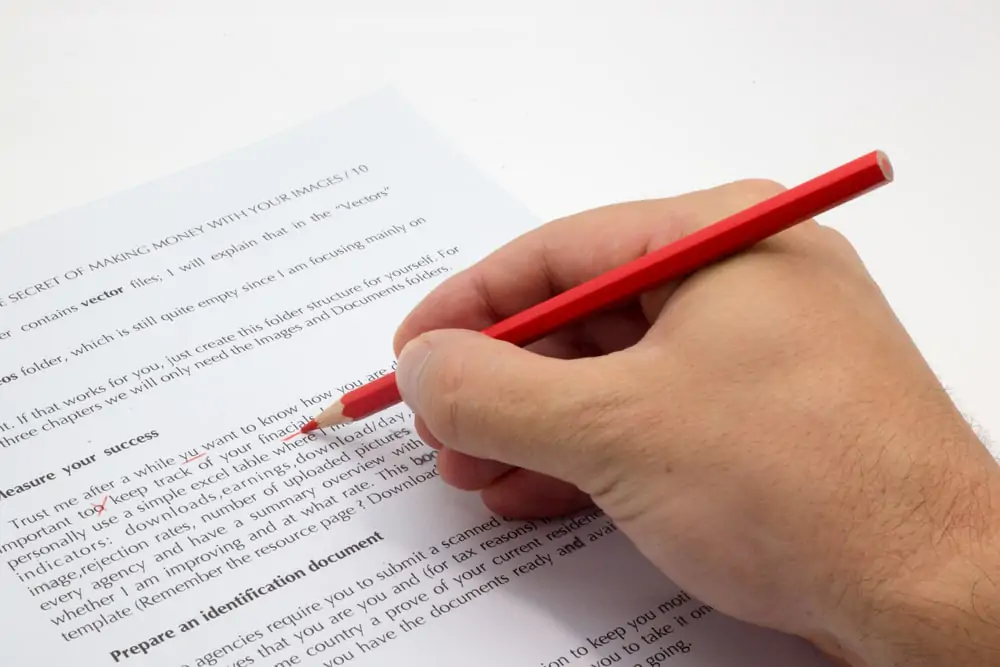Learn how to write a business proposal that will make your marketing efforts more effective by reading our comprehensive guide.
If you are working to bring new clients to your small business or are a freelancer actively seeking new work, you will need to know how to write business proposals. Business proposals act as a pitch for you or your business to show prospective clients why you are the right person for the job.
Your goal with a business proposal is to create change. The content must, therefore, show that you know your audience. It also must be compelling and have the correct grammar and formatting to impress the client with your abilities.
Proposify, a software company specializing in these proposals, estimates that half of all proposals are signed or rejected within 24 hours after receipt. You have only a tiny window to make an excellent first impression with your proposal.
Contents
- Materials Needed
- Step 1. Create a Title Page and Table of Contents
- Step 2: Include a Table of Contents
- Step 3: Craft the Executive Summary
- Step 4: State the Problem
- Step 5: Show Yourself as the Solution
- Step 6: Include Relevant Case Studies
- Step 7: Showcase Your Qualifications
- Step 8. Highlight the Schedule
- Step 9. Cover the Costs and Legalities
- Step 10. Talk About the Benefits
- Step 11. Add an Agreement Document
- Step 12. Set the Right Tone
- Step 13. Proofread, and Proofread Again

Materials Needed
- Computer
- Printer
- Letterhead
- Research
- Graphs and infographics for your proposal
- Data about your audience
Step 1. Create a Title Page and Table of Contents
First impressions matter. Balance professionalism with engagement by setting the tone with a title page that draws them in. Your title page should include the following:
- Your business name
- The name of the project you are proposing
- The client’s name
- The date
- The name, contact information, and title of the person who submitted the proposal
Once inside, the client should see a clear and concise table of contents. It can help to write this part first, but go back and edit it after you have written the rest of the proposal. This way, you can be sure it is accurate and descriptive.
Step 2: Include a Table of Contents
A table of contents will include a brief list of the items covered in the proposal if you are writing a longer proposal. You can skip this page if you write a short one- or two-page proposal. While this page comes second in the proposal, you may want to write it last. This allows you to add page numbers after finalizing the complete document.
You will include the titles of each section in the proposal with a page number for printed proposals. The title will be justified to the left margin, and the page number will be on the right. If submitting the proposal electronically, use hyperlinking to give your reader easy navigation tools.
Step 3: Craft the Executive Summary

The executive summary is a summary of the content of the proposal. While this part is short, it is one of the most essential parts of your business proposal. This is your chance to make an excellent first impression, so you want to make it effective.
If you’re sending a proposal to a customer, client, or investor, use the executive summary to introduce yourself and your brand. Think about the stakeholders and decision-makers and what is most likely to appeal to them.
There is time later in your proposal to expand on your background and experience specifics. If you spend too much time early on describing your company, your reader may not stay engaged through the entire proposal.
First, tell them who you are and what you do, and briefly touch on their pain points. Then, let them know how you will use your business and the plans inside the proposal to address their needs. Keep this section concise. It needs to be as short as possible. The rest of the business proposal provides the space you need to outline your business plan.
Step 4: State the Problem
This is a place to discuss the problem that your company’s efforts address. In addition, this allows you to show your research into the reader’s pain point. This section is critical, as it provides a smooth way to segue into your company’s abilities and how they can solve the problem your prospect is experiencing.
When you are outlining the problem, be as specific as possible. Use statistics, industry-wide figures, and the results of surveys and research. A lean startup, for instance, may need outside help to deal with marketing since they do not keep someone on staff full-time to deal with the role. This, in turn, can lead to excessive or undirected expenditures.
Step 5: Show Yourself as the Solution
This is where you make your pitch. Be specific in your solutions. Let the customer know the deliverables you will provide, your methodology, your project’s milestones, and the timeframe for when your new client can expect them. In most cases, it makes sense to use bullet points to explain your solution clearly and succinctly.
Returning to the example of the social media marketing company above, solutions in their business proposal could include:
- Assessing the client’s current social media presence.
- Updating their profiles to reflect current best practices.
- Tracking metrics for 90 days.
- Reporting on improvements.
- Making recommendations for continuation after that point.
Use an active voice and describe what you will do for them. An excellent proposal makes the reader understand the ways that your business will go to work for them.
Step 6: Include Relevant Case Studies
If you have case studies showing past clients with a similar problem, consider including a section specifically for them. For the social media marketing example, you could build a proposal with a case study showing how you used your services to help a new business grow a particular number of followers. You could then include in your project proposal the timeline that was in place for this delivery.
Step 7: Showcase Your Qualifications
Now is the time to talk more about yourself. Details in this section should still be focused on client needs but can go further into your background and history. You have probably already written some of what would belong here in your business’s “About Us” page on your website.
Be as specific as possible when describing your qualifications, using numbers whenever it makes sense. Detail the experience that is most relevant to your potential customer. Some details you could include in this section include:
- Summary of your work experience
- Educational background
- Industry-specific training
- Certifications
- Past success stories
- Client testimonials
- Your role within the company for internal proposals
Step 8. Highlight the Schedule
Your client wants to know how and when you can solve their problem. Tell the client in this section how long they can expect the proposed project to take. As you build this section, make your proposed schedule realistic. Set benchmarks or milestones that you can measure along the way if you have a long-term project in mind.
Be sure you make the timeline achievable because you don’t want to promise more than you can deliver. This section is essential for a project-based proposal. However, if your proposal is part of your sales process and includes a product, not a service, you can skip this section.
Step 9. Cover the Costs and Legalities

This is the place to investigate projected timelines, payment schedules, and other details. Give enough information so that the decision-makers in the company can decide if your proposal and the cost of your services make sense.
While you do not want to price yourself out of the market, you also do not want to waste your or your client’s time if your offerings are outside their budget. One way to navigate this is to offer a few different packages at different price points. Consider adding a pricing table to this section. This table allows the reader to see proposed costs, understanding that those costs can vary depending on the level of service you order.
Ensure to include a copy of the terms and conditions in this section. Be as clear as possible when explaining terms. This way, no one is surprised later by any misunderstandings about deadlines or payment terms.
Step 10. Talk About the Benefits
If there is anything else you need to cover beyond the qualifications you already mentioned that would encourage a potential client to become an actual client, consider adding a final benefits section. This will give you yet another opportunity to add to your value proposition.
Impress potential new clients by telling them why yours is the winning business proposal. Tell them what they could receive as benefits should they choose you to meet their problem head-on. They should finish reading your proposal and clearly understand why you are the most logical choice to hire for their upcoming needs.
Step 11. Add an Agreement Document
Include an agreement if you ask for the client’s business in your proposal. This section should ask the reader to sign off on the proposal if they accept it. You should have a line for their signature as well as your signature. Your contact information needs to be on this page, too. The agreement document is not a contract.
The legally binding contract comes later after negotiations. It simply is a chance for the reader to say that they read the proposal and accept its terms, so you can move forward with the legalities and create a contract.
Step 12. Set the Right Tone
As you proofread the proposal, ensure the tone fits your brand and its goals. A professional but friendly tone is usually best, but your brand guidelines may have something different in mind.
Sometimes a more casual tone is appropriate for your branding goals, while other brands may have a highly professional tone that does not allow for a friendly bent. Align the tone with your brand guidelines to create the right first impression.
Step 13. Proofread, and Proofread Again

A business proposal is not somewhere you can afford to make mistakes. You must clearly show the reader why they need to do business with you; many typos will turn them away. Potential clients may distrust a business that cannot create a proposal free of grammar errors. Check your grammar carefully. Also, If you’re looking for a tool that has a huge proposal template gallery, you should check out and try Bonsai now!
Read the proposal out loud to make sure it flows well. Use a grammar-checking program, such as Grammarly, to ensure that you have everything clear and error-free. Consider asking another party to read the proposal on your behalf to be sure no pesky errors are hiding in it that you can’t see.
Grammarly is one of our top grammar checkers. Find out why in this Grammarly review. When editing for grammar, we also recommend taking the time to improve the readability score of a piece of writing before publishing or submitting it.